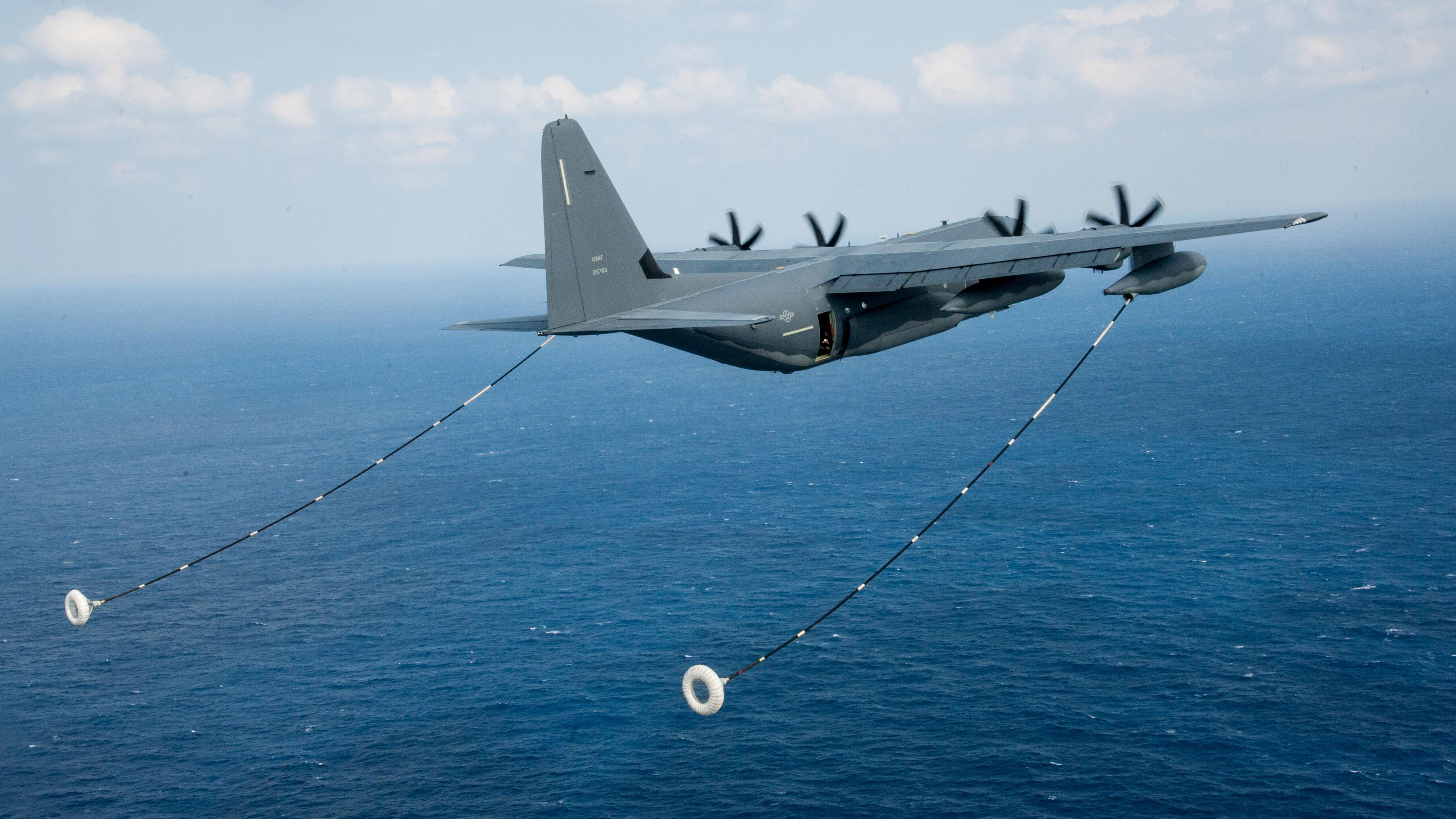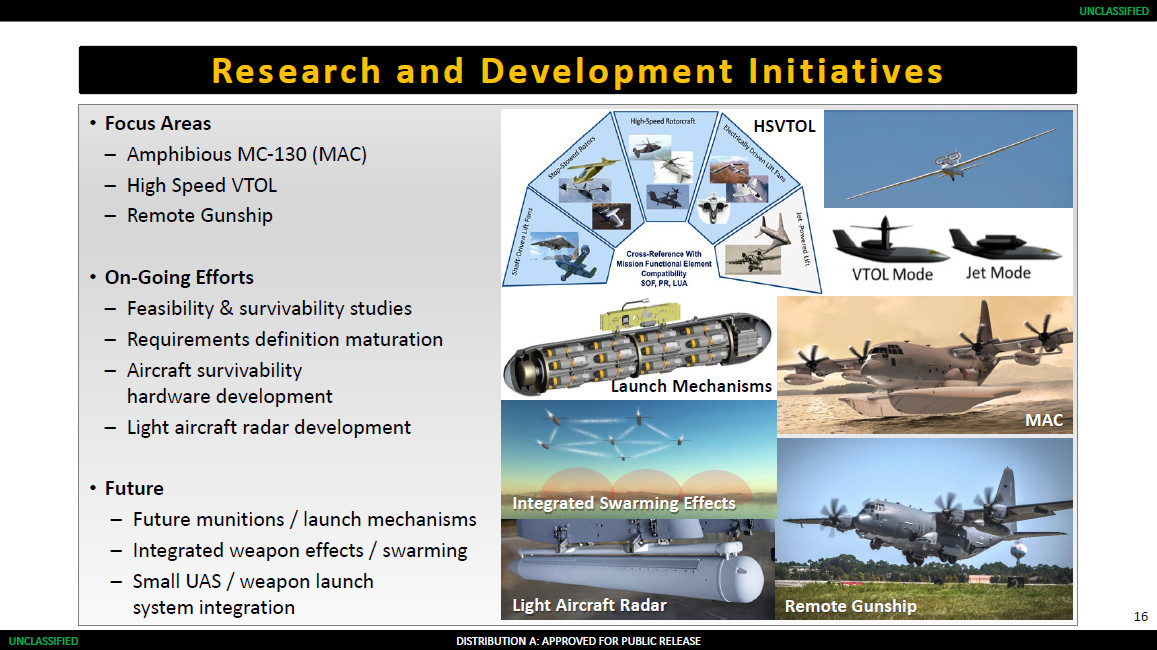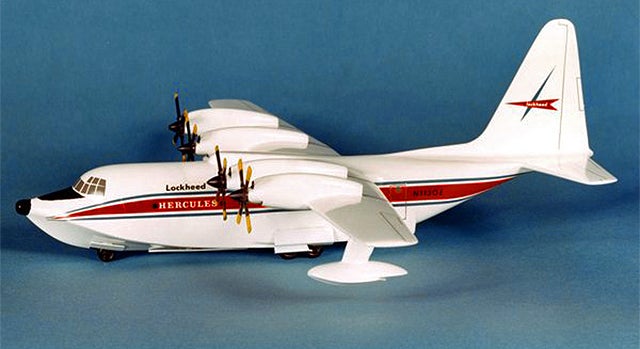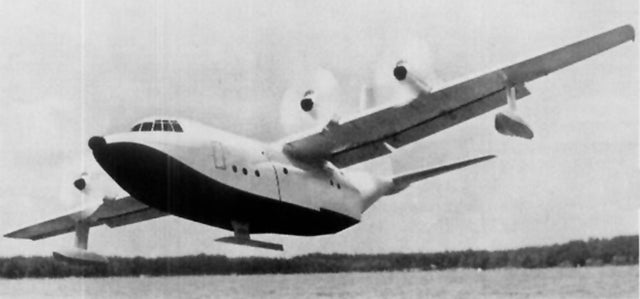The U.S. military is once again looking at the potential of an amphibious C-130 Hercules variant to operate from littoral areas in support of special operations forces. The project, which in its early stages, has yielded an artist’s concept of an MC-130J Commando II multi-mission combat transport fitted with large underslung floats mounted on the fuselage. The MC-130J is the latest Air Force special operations version of the Hercules, intended to penetrate into denied areas to insert, extract, or resupply special operations forces, as well as refuel helicopters and tilt-rotor aircraft.
The new effort, known as the MC-130J Amphibious Capability, or MAC, came to light today in a briefing given by U.S. Air Force Colonel Ken Kuebler, U.S. Special Operations Command’s (SOCOM) Program Executive Officer for Fixed Wing (PEO-FW), at the annual Special Operations Forces Industry Conference (SOFIC). At a media roundtable later in the day, Kuebler added that feasibility and operational studies regarding the project are going on now and that the command is working with unspecified “innovative partners” to hopefully prove out a lot of the concept using digital design tools. This, in turn, could help speed up the research and development and help keep costs low.


It’s important to note that, while the concept art in Kuebler’s briefing, seen at the top of this article, shows huge floats added to an MC-130J, he stressed that the MAC concept is looking for an amphibian aircraft able to operate from the land, as well as bodies of water. A basic floatplane would not be able to operate from land, but adding wheels to the floats could give it this capability. There are other possibilities, as well, for how the aircraft could be made truly amphibious.
The basic idea of a waterborne C-130 has been around for decades and it is a concept that certain parts of the Pentagon have mulled in the past. In fact, the aircraft’s original manufacturer, Lockheed, pitched a fully amphibious Hercules with a boat-like hull back in the 1960s, without success, though the U.S. Navy did at least undertake studies using a radio-controlled scale-model version. Lockheed has since evolved in Lockheed Martin, which is the current manufacturer of the C-130J family, including the MC-130J.


The possibility of fitting a C-130J variant with pontoon-like floats attached to the fuselage, as seen in the PEO-FW concert art, is not new, either. Lockheed Martin proposed just a version of the aircraft in the late 1990s, reportedly after receiving interest from the U.S. Navy as a way to insert and extract SEAL teams, and their specialized watercraft, in littoral areas.

Of course, strapping big floats to a Hercules would impose severe drag and weight penalties, reducing range and load-carrying capabilities, although it is not unheard of for seriously large aircraft to operate on floats.
However, with the amphibious requirement in mind, it may be the case that the concept art is a simple reuse of older floatplane artwork, and not necessarily exactly what SOCOM now has in mind for its seagoing Hercules. While a boat-like hull would not have such an adverse effect on performance, it would require more significant redesign and it’s not something that Lockheed Martin has been known to be working on of late.

Regardless of the exact configuration, an amphibious MC-130J could offer new and novel capabilities for the U.S. special operations community, particularly as part of future expeditionary and distributed operations. The U.S. military, as a whole, has been exploring concepts of operations in recent years that focus heavily on being able to operate from austere and remote areas with very limited infrastructure in the event that large, established bases are destroyed or are otherwise unavailable.
Air Force MC-130J crews already train to operate in exactly these kinds of environments and there have been many efforts in the past to expand the ability of the Commando II, as well as the older MC-130H Combat Talon II, to operate from very confined areas with little or no infrastructure. You can read more about these initiatives in this past War Zone feature.
At the same time, the U.S special operations community at large is currently in a process of examining how it could contribute to higher-end conflicts, including against near-peer adversaries, such as China or Russia, and especially in the broad expanses of the Asia-Pacific region. This includes operating from small islands in the Asia-Pacific region, where there might not even be sufficient space on certain tiny islands to establish a proper airstrip quickly. An amphibious aircraft could be the perfect solution, especially in times of conflict, when existing airfield infrastructure might be placed under considerable threat, if not destroyed in a first wave of attacks.

During the media roundtable, Colonel Kuebler said that potential conflicts with “peer and near-peer” opponents and other “emerging threats” were some of the drivers that had prompted the MAC project. He also acknowledged that the aircraft could be particularly valuable in the Pacific, but also pointed out that it would be able to operate from anywhere there is water.
An amphibious C-130 could potentially perform a wider array of missions beyond those of the standard MC-130J, as well, and Kuebler said he “would not make that assumption” when asked if the MAC aircraft would have the exact same mission set as the Commando II. If a waterborne Hercules finally comes to fruition, various elements of the U.S. military, beyond just the special operations community, could very well be interested in acquiring them.
A 2016 U.S. Marine Corps ‘toolkit’ of existing and notional capabilities for use in developing tabletop wargames includes a section on seaplanes, with a clear emphasis on operations in the Pacific. A slide from that document, seen below, provides data on a float-equipped Cessna 208 Caravan, the Bombardier (now Viking Air) CL-415MP amphibian, and the Japanese US-2 amphibian, as well as their respective ranges operating from Manila in the Philippines.

“Seaplanes are a proven, cost-effective operational capability that can provide lines of communication to remotely dispersed EAB sites that lack port or airfield infrastructure,” the document read. EAB refers to Expeditionary Advance Base Operations, a broad concept for executing expeditionary and distributed operations the Marine Corps has been developing, which you can read more about here.
The inclusion of the US-2, presently only in service with the Japanese Self-Defense Forces, and primarily used for search and rescue, underscores both the relevance of such aircraft in the Pacific and other missions they can perform, including in non-combat disaster relief and humanitarian assistance roles. China is also busily working on a much larger amphibian of its own, the AG600, which is widely expected to have a significant military, or at least paramilitary, role, especially in support of man-made islands and other infrastructure in the hotly contested South China Sea.

With all this in mind, beyond the Navy and Marine Corps, the U.S. Coast Guard could be another service that might be interested in an amphibious Hercules. It is a C-130 operator and a waterborne version could operate as a long-range search and rescue aircraft, allowing survivors to be picked up directly from the sea, thousands of miles from the shore, providing the weather and sea conditions permitted it. It’s also worth remembering that the Coast Guard operated HU-16 Albatross amphibian aircraft into the 1980s.
A seaplane variant of the Hercules could also lend itself to the kinds of aerial firefighting missions that are now undertaken by Air National Guard C-130s with the Modular Airborne Firefighting System, or MAFFS.
While it remains to be seen how the MAC effort will progress, and what specific kinds of roles a potential MC-130J amphibian might take on, Kuebler made clear that he felt there was “enough command interest” to be hopeful that this long-discussed concept will finally become a reality.
Contact the author: thomas@thedrive.com
